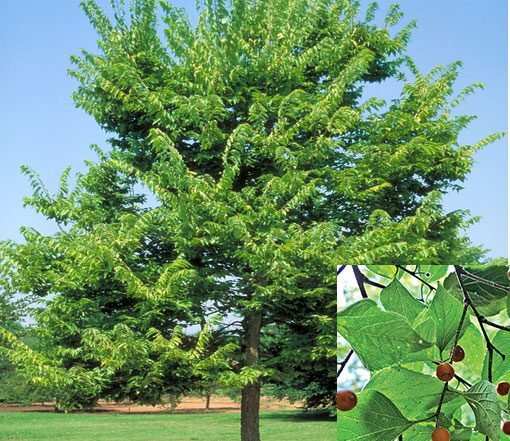Common Hackberry
Scientific name: Celtis occidentalis
Hackberry is a medium to large-sized deciduous tree with a rounded spreading crown. With a medium to fast growth rate, this tree typically grows to 40-60 ft tall and wide.
Native throughout the eastern and midwestern United States, hackberry can reach 130 ft tall on the best sites. Green leaves are ovate, rough-textured, and coarsely toothed. Green flowers bloom April to May. Abundant fruit are purple berry-like drupes that are attractive to wildlife.
The flesh of the fruit is edible and somewhat sweet. Hackberry also supports the larvae of multiple species of butterfly and other pollinators. This tree has a straight central trunk and mature gray bark with corky ridges. Hackberry can live 150 to 200 years. Other common names for this tree include sugarberry, nettletree, and beaverwood. Tolerant of drought, wind, air pollution, and a wide range of soil conditions. This tough shade tree is recommended for lawns, rain gardens, or along streets. Grows in full sun to part shade and in plant hardiness zones 2-9. It is commonly infested with sap-sucking insects called a psyliids. One is the hackberry nipple gall maker, Pachypsylla celtidismamma, which makes round galls on the undersides of the leaves. They don’t harm the tree, but some find them unsightly.


